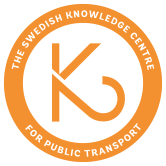Over the years, passenger incentives have increasingly been used in Swedish public bus transport to increase ridership by introducing passenger incentive contracts. In those contracts, operator revenue comprises production-related revenue and a per-passenger–based incentive payment. In 2015, half of all active contracts were of this type, but there are few evaluations on whether the contract type increases ridership. Using rich passenger data, this paper analyses whether the ridership increase in the Skåne region can be attributed to the introduction of this contract type. The results cannot prove that passenger incentive contracts have increased ridership more than traditional gross-cost contracts. This is probably because both the per-passenger payment and operator freedom to adjust traffic provision are too low. While simulation studies have previously shown that higher payments and freedoms would increase bus ridership, it is unclear whether public transport authorities should leave the freedom to adjust traffic provision to operators, given the authorities’ social welfare responsibility. Instead, factors outside the contract, such as car-restricting measures and improved bus road space, might be more effective in increasing the number of passengers.
